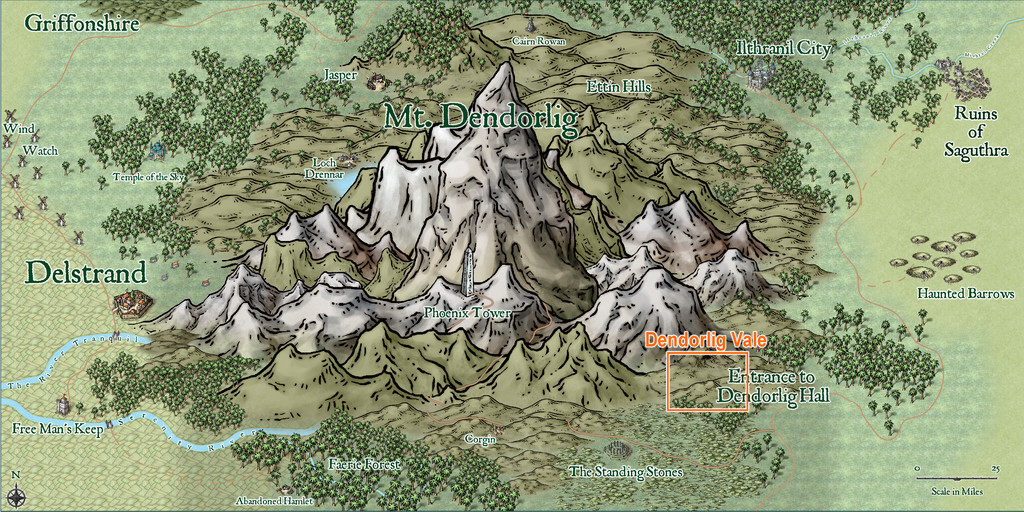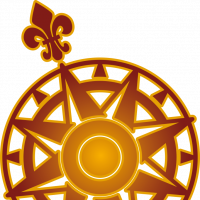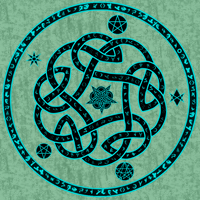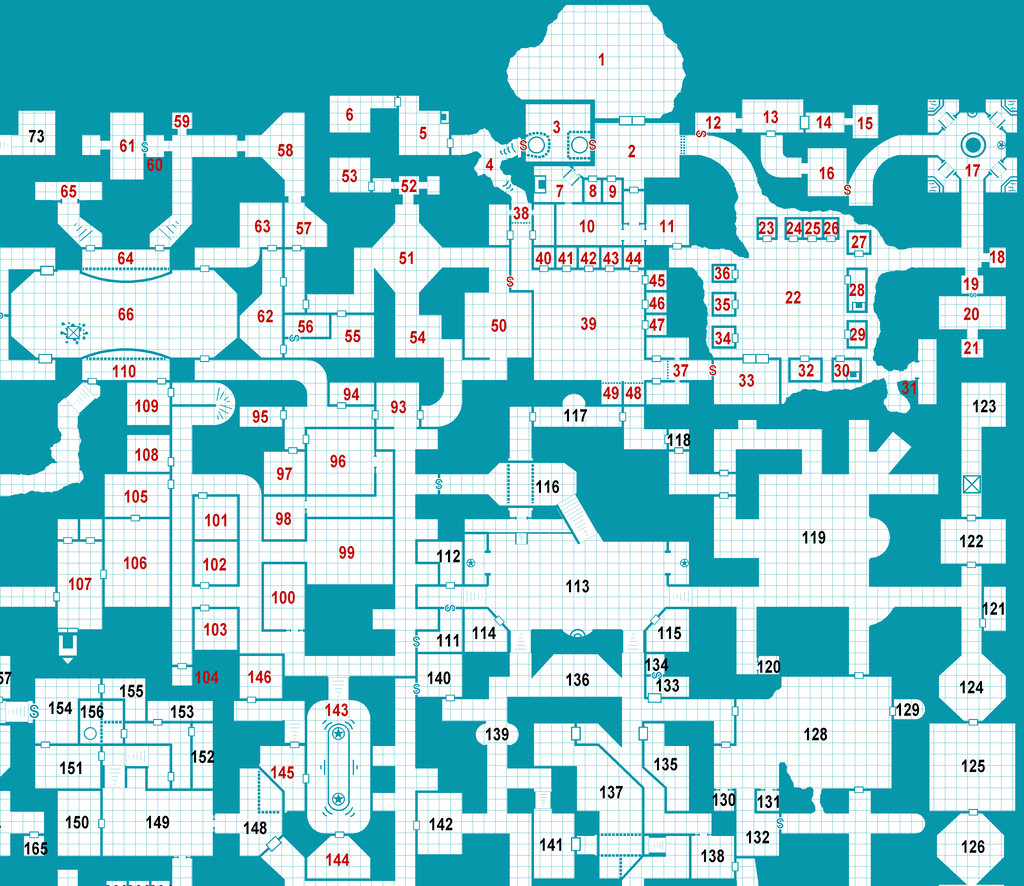
Wyvern
Wyvern
About
- Username
- Wyvern
- Joined
- Visits
- 3,153
- Last Active
- Roles
- Member
- Points
- 5,382
- Rank
- Cartographer
- Badges
- 24
-
[WIP] Continent Map using CC3+ MS Overland and other resources
Map labelling's always tricky. There's an inevitable trade-off between clarity, precision and how much information you need to/want to present. Colour-coding the settlement names, as you've done here, is a useful trick, and maybe just using that with a map legend to say which colour means what realm might be sufficient at this smaller scale. The larger-scale text labels still seem a little too distracting, for all their faded transparency, to me, but the important thing is that you're happy with the end result, of course! And the maps DO look good!
-
Expansion to Ellis Prybylski Watercolor Style
Yes please to the Elf, Dwarf, Halfling and Orc structures, plus ruins, ships, icy elements, a volcano-mountain, variant settlement features (including for different cultures)! And after those, also perhaps:
- Magical site markers
- Battlefield marker, and a more general flag-style marker, to highlight important sites that don't fit to specific structure types.
- Oasis symbols for the deserts.
- Two more bridges at different angles to the current one - one running straight down the page, the other angled down from top left to lower right.
- I really like the Henge and Tomb hill markers, as they look good on any terrain. Another such marker with a cave mouth would be very useful.
- Some Mountain Peak symbols without the snowy tops (so grey mountains, just no white caps).
- Seeing the animal and creature comments, just the actual creature without any associated terrain would be better, as usable anywhere. Snag is, going down this route is liable to lead to requests for a lot more "resources" style markers - domesticated creatures and crops, minerals, etc.
- Some jungle-style trees, perhaps including mangroves, as well as the fruit trees Monsen mentioned.
I'll probably think of others later, but these are what're coming to mind right away. It's a wonderful style, and it would be excellent to see it expanded as far as possible in future, I think.
And thank you very much for creating it!
-
Community Atlas: Dendorlig Hall - A Sort-Of D23 Dungeon for Nibirum
Having at last managed to map the exterior region beyond the Hall to its south, Dendorlig Vale, and having just discussed it on the Forum, it seemed a good idea to update the state-of-play with the Hall itself today as well. My handwritten notes currently have reached area 201, while the type-up of these has reached area 160, all of which is easier to tell now, as I'm past the point where some areas were being written and typed-up out of sequence. The map continues to be amended in minor ways, notably in the placement of the area number-labels, after these, as noted previously, were enlarged some time ago.
Today's notes cover what was partly shown in the lower right corner of the previous sample map-segment here, the places formerly occupied by The Pegasus Club and the areas adjoining it (not all of which were directly related to the Club in their previous use). This is the map segment covering the areas involved:
And these are the extracted PDF notes to go with the same areas (only):
As usual, both map and notes are subject to further amendment subsequently, as the text hasn't been fully checked still, while the project remains ongoing. Indeed part of the earlier notes posted here, which mentioned Dendorlig Vale, have been altered slightly too following the mapping of that external region, to reflect how the map actually turned out, rather than how it seemed it might earlier!
Further updates should follow, if all goes to plan.
[EDIT: And if only I'd realised this would have had the Forum-added note "28 Days Later", I might have made some post-apocalyptic comment as well 😉. Too late now though...]
-
Community Atlas: Dendorlig Vale, Malajuri
If you read through the draft PDF version of my notes on Dendorlig Hall Village, part of the megadungeon/abandoned Gnome city I've been working on this year, which was added to this Forum topic on 18th Feb, you might have spotted I mentioned there a couple of places outside the Hall complex, above ground, including Dendorlig Vale. At the time, I wasn't sure if I'd be mapping that area as well, having already distracted myself far more than I'd intended away from my main focus of mapping the Errynor region in NW Alarius.
This impression wasn't helped by a couple of abortive attempts to design the map during February-March, as although I'd a hand-drawn set of ideas for the area's layout, when it came to the CC3+ mapping, I couldn't get it to look like how I wanted, in the styles I'd thought might work best. There were two main reasons for this. One was that neither of my preferred styles had a complete set of options for the structural features I wanted to add. The other was that the colour palettes involved were rather too close to the Alyssa Faden style, which I'd already used in my earlier Clack Valley map for the Atlas, and I couldn't get past the fact it felt too much like mapping the same place again; daft, of course, as it isn't, but that's what kept tripping me up.
Thus matters rested, and I'd half-decided I probably wouldn't map the Vale area after all, until I saw the brand-new E Prybylski Watercolour style in the just-released CA 196, and realised it would work very nicely for what I wanted! So here it is, still subject to amendments, given the Hall's own mapping remains in-progress only, but I am happy with the overall look now:
It's a very attractive style to my eye, and fits nicely with the somewhat bucolic view I had of the repopulated agricultural lands south of the Hall, peopled by Gnomes and Halflings, hence the names. There's a higher-res version in my Gallery as well, although even at the reduced-size for the Forum, the style seems clear enough already.
Now though, I've got another map to do a write-up for, besides Dendorlig Hall!
So this won't be going into the Atlas immediately, but, and with apologies for the belatedness of the request, @Monsen, could you reserve the Dendorlig Vale area on the Mt Dendorlig Region map in the Atlas for me, please...
-
Community Atlas: Dendorlig Hall - A Sort-Of D23 Dungeon for Nibirum
GM's Day today seemed an apt moment for another progress update for this project, which is continuing, if having been somewhat interrupted at times by external events since my previous post. In the interim, the handwritten notes for the place have reached area 168 now!
However, today's notes focus on the re-explored parts of Dendorlig Hall, which, as mentioned earlier, comprise areas 50-66, 93-110 and 143-146. These have been allocated the same red numbering colour as the reoccupied "Village" section (areas 1-49), as also discussed before, while the unexplored bulk of the underground complex has been numbered in black. This illustration shows the south corner of the map, covering all the "red" areas now, as well as the nearby "black" ones (and remember, south is now towards the top right corner of this map as viewed here, north towards the bottom left; the Water Temple area, 17, in the top right corner, handily provides a reminder of the cardinal directions with its arrowhead-shaped sub-chambers).
Note that only the red numbers have been adjusted to better fit their locations on this image so far. I've been amending the number-placements beyond this only as I've been typing-up the notes, as well as making occasional amendments to the room layouts, and that type-up still lags considerably behind the hand-scrawled descriptions, by about 70 areas currently.
Next here are the extracted notes as a PDF for just the re-explored zone. In the final full PDF and text notes, it's intended they'll follow along directly after the "Village" notes that I posted here last time, and will then continue into the unexplored parts as well (so you may need to re-read parts of last time's PDF to get these new notes to make sense; or what sense they may make at this stage, anyway...):
As before, these are just the draft notes, and haven't been fully checked as yet, so may be subject to changes later, but they will give some ideas as to what's been happening.
From the original map alone, it's long been clear that some areas of variable shapes, sizes and connections, have mutual links or locations that suggest a main purpose or function - that's what prompted the whole reoccupied "Village" concept initially, for example. From that base, it's followed naturally that the Hall area, far from being a random dungeon (even if that's how it began!), was really an underground town or city-sized settlement originally, and one which had been expanded and adapted at different times. Hence we have places such as the Arena (66, whose ancillary rooms extend into the unexplored zone as well) and the Stone Garden (143) from the latest PDF notes. Elsewhere, there is already a former nightclub-like entertainment venue, with a separate dance-hall/plaza, a communal swimming pool, a royal palace, and the royal tombs, with other features noted for possible inclusion that are still to be emplaced subsequently. Some of these have been inspired by the random Wizardawn room descriptions; sometimes those descriptions have dovetailed beautifully into what I'd decided the areas were to be, without first checking the notes (which always raises a smile), although much remains to be finally defined.
More when I know what it is!













